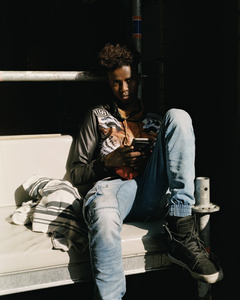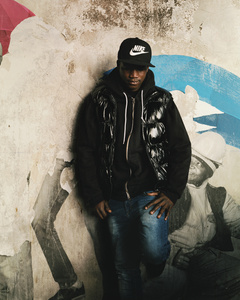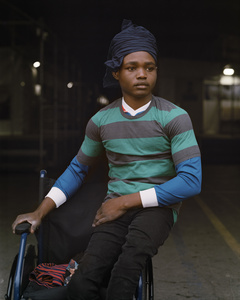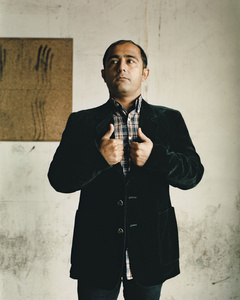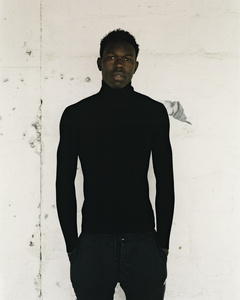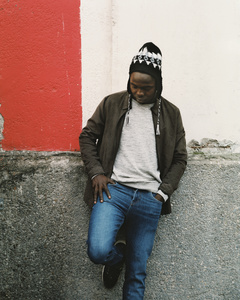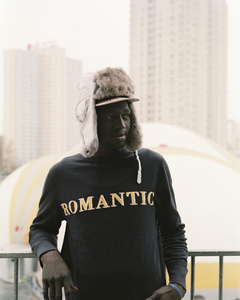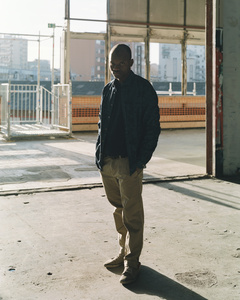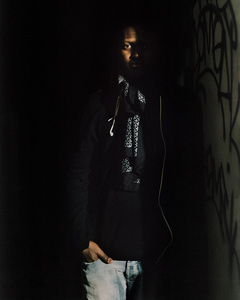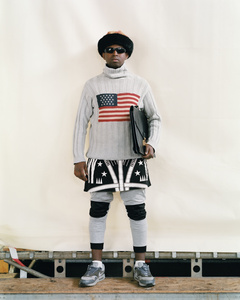Portraits et paroles d’exilés
co-réalisé avec Frédéric Delangle
Cela se passe au centre d'accueil d'Emmaüs Solidarité de la porte de la Chapelle, en 2017. Un an environ avant sa fermeture. Et plus précisément cela se passe à la « Boutique », le lieu où les hébergés (exclusivement des hommes) peuvent profiter de dons de vêtements de seconde main, du slip à la paire de chaussettes, en passant par les pantalons et les chaussures. Un lieu stratégique, et un moment intense pour les hébergés mais aussi pour les bénévoles. Car à « la Boutique » le travail est difficile. Les exilés au moment du choix y sont anxieux, stressés et parfois exigeants. Oui exigeants.
Un soir d’hiver, Zaman, un jeune afghan – arrivé en bermuda et en tongs après avoir marché seize mois depuis Kaboul –, s’est présenté au vestiaire de l’association Emmaüs Solidarité à Paris. Il m'a demandé sans trop y croire si par hasard, dans le tas de tennis usagées qui lui étaient présentées, il n’y aurait pas plutôt une paire de baskets « des baskets pas moches….Des sneakers comme celles de Jay Z …"
L’idée du projet est partie de là.
Valérie Larrondo, bénévole chez Emmaüs Solidarité depuis 2016, accompagnée de deux photographes, Frédéric Delangle et Ambroise Tézenas, un vidéaste Sylvain Martin et de trois autres bénévoles ont entrepris d’en savoir plus. De comprendre ce qui se jouait là tous les jours pour chacun d’eux, devant les caisses d'habits d’occasion. Ces vêtements qu’ils portent et qui ont appartenu à d’autres... Que représentent-ils pour eux?
En quoi ils dénoncent, en quoi ils trahissent, ou en quoi ils les protègent (et pas juste du froid et de la pluie).
Parmi tous les habits, ils ont choisi une tenue et ont pris le temps d'expliquer pourquoi.
Pourquoi ces chaussures, cette forme de col, cette couleur de veste.
Tous ont pris le temps de parler. De poser. Des moments intimes, parfois drôles, parfois graves. Toujours dignes.
Cette cinquantaine de portraits réalisés "à la chambre", comme un moment de rencontre, calme et intime …et ces moments précieux d’interviews ont été nécessaires pour comprendre à quel point le vêtement est tout sauf anecdotique dans leur vie.
Ce vêtement, c’est leur carte d’identité.
Sneakers Like Jay-Z
One day, Zaman, a young Afghan presented himself at the center of the Chapel, the "bubble" managed by the Emmaus association and which was deflated last April, after having welcomed by more than 25,000 migrants recorded 60,000 passages. Exiled in 18 months of existence, this young man, who had been walking relentlessly for months from Kabul, needed shoes, and at the shop he asked if there were sneakers–not too ugly, sneakers like Jay-Z's.
This is where the photographic project "Sneakers like Jay-Z" was born . Because this anecdote led the photographers and others volunteers to question the social function of clothing for refugees–and especially to ask them the question. In cases filled with shoes, sweaters, coats, they choose what is their size but also what they like.
A colour that evokes family or homeland, a duffle-coat that makes you feel "on par with" those they meet in the street or, quite simply, a cap "too swag": The reasons that led them to choose this garment rather than another one say a lot about their history, their personality, their individuality.
The photographers Frédéric Delangle and Ambroise Tézenas immortalized them with the jacket or trousers of their choice–at this moment when they were beautiful.
Presented at the Festival of Arles, the work of explores the social function of a garment for refugees: to merge in with the mass, to be on a "foot of equality" or simply to be "swag".
Photographes : Frédéric Delangle et Ambroise Tézenas
Conception et Direction Artistique : Valérie Larrondo
Coordination et Partenariats : Sabrina Ponti
Interviews : Marion Perin, Vanessa François, Sabrina Ponti et Valérie Larrondo
Vidéaste : Sylvain Martin
